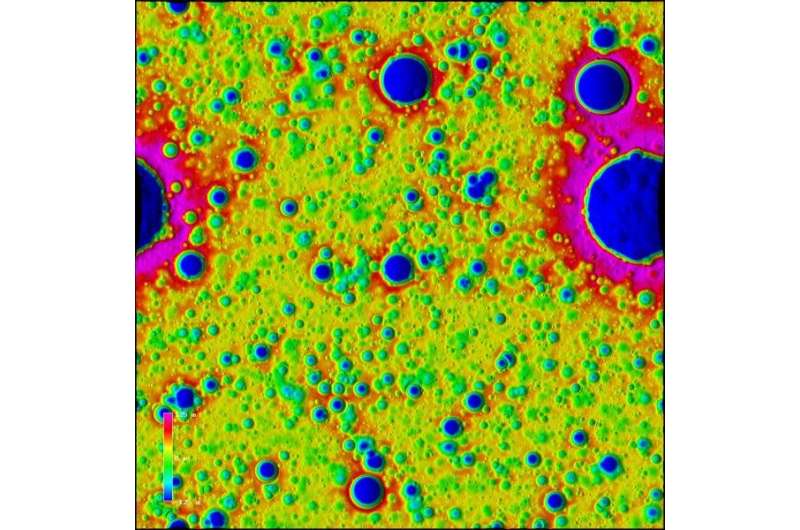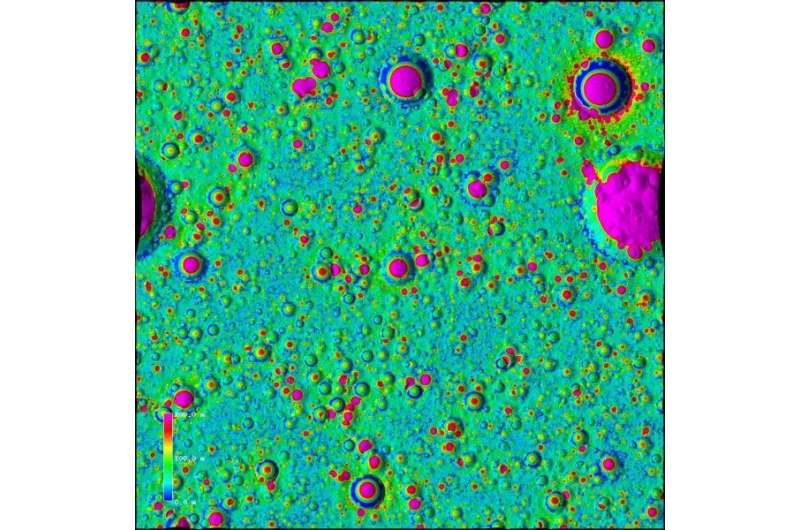Impacts on asteroids produce regolith, erase small craters

Impact cratering both produces new regolith and causes seismic events that can degrade and erase small craters on the surface of asteroids, a paper by Planetary Science Institute Senior Scientist James Richardson says.
The impact of small bodies hitting an asteroid pulverizes its surface, making new regolith, while seismic shaking produced by the impact causes older regolith to move downhill and fill already existing craters, according to "Impact-produced seismic shaking and regolith growth on asteroids 433 Eros, 2867 Steins, and 25143 Itokawa" appearing in Icarus. Richardson is lead author of the paper and PSI Research Scientist Jordan Steckloff is a co-author, along with David Minton of Purdue University.
"The first objective of this study was to investigate and model the production, loss, and retention of impact-generated regolith on spacecraft-observed asteroids 433 Eros, 2867 Steins, and 25143 Itokawa," Richardson said. "The second objective was to investigate and model the effects of impact-induced seismic shaking on the crater population of these same three asteroids." Richardson had published on this topic back in 2004 and 2005, but new asteroid observations and greatly improved modeling techniques were included in this work.

"To perform this study, we utilized the numerical, three-dimensional, Small Body Cratered Terrain Evolution Model (SBCTEM), introduced in a 2009 paper, which received a significant upgrade for this work," Richardson said. "In this model, a computer-generated asteroid surface is bombarded by millions of small impactors as a function of time, simulating the collisional conditions that exist in the middle of the Main Asteroid Belt. Each impact produces a new crater on the model surface; generates regolith in the form of crater collapse deposits and an ejecta 'blanket' that covers the surrounding terrain; and produces a far-ranging seismic event that causes regolith on the virtual surface to gradually migrate downslope, slowly degrading and erasing pre-existing craters."
Using this model, the team was able to reproduce the cratering record and regolith layer of 17 kilometer diameter asteroid 433 Eros, including its paucity of small craters less than 100 meters in diameter; the heavily softened cratering record and regolith layer of 5 kilometer diameter asteroid 2867 Steins, including its paucity of craters less than 500 meters in diameter; and the extremely subdued cratering record of 0.35 kilometer diameter asteroid 25143 Itokawa, including its paucity of craters of all sizes.
"These simulations demonstrate the efficacy of impact-induced seismic shaking to degrade and erase small craters on the surface of asteroids less than about 25 kilometers in diameter, correctly reproducing their observed cratering records," Richardson said. "These simulations also demonstrate that the observed regolith layer on asteroids in the 5 to 50 kilometer size range can be explained and modeled through impact cratering processes alone, and show that regolith depth can be used as an additional means to estimate the surface age of a given asteroid, in addition to using its cratering record."
More information: James E. Richardson et al. Impact-produced seismic shaking and regolith growth on asteroids 433 Eros, 2867 Šteins, and 25143 Itokawa, Icarus (2020). DOI: 10.1016/j.icarus.2020.113811
Journal information: Icarus
Provided by Planetary Science Institute





















